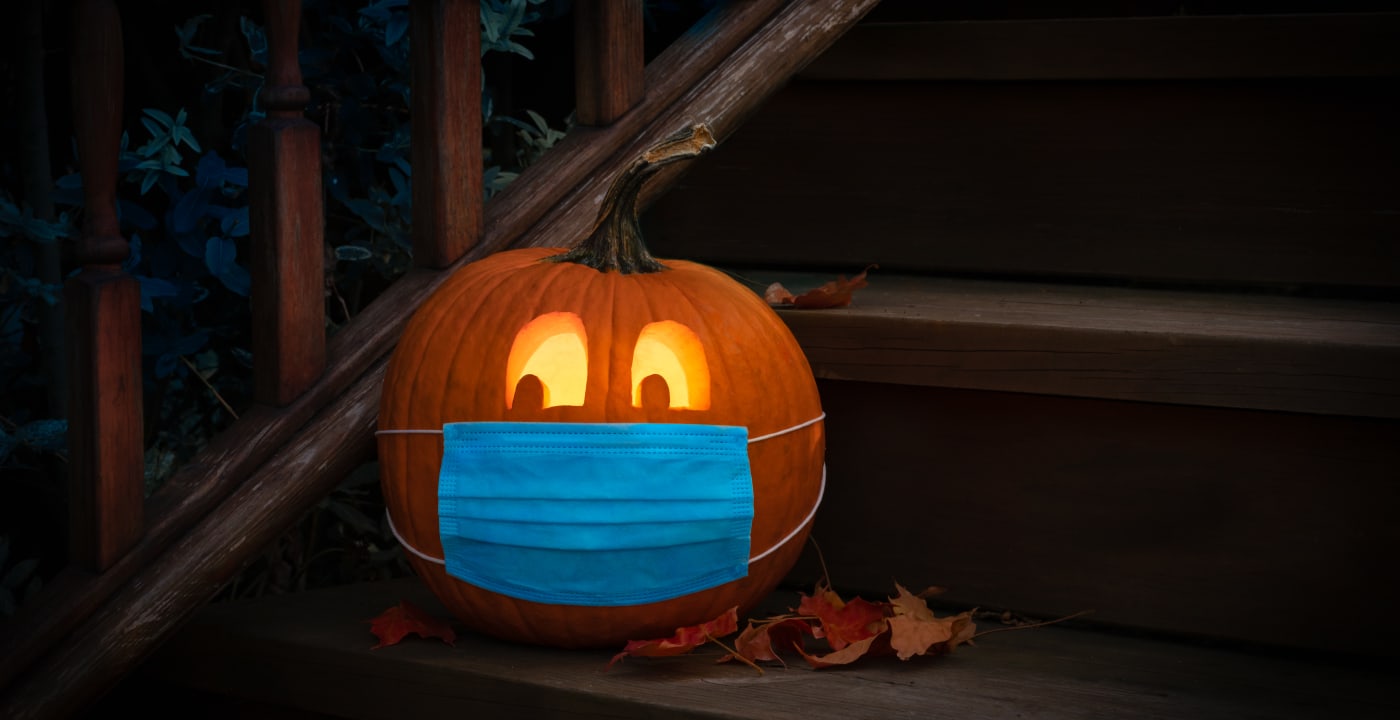Halloween 2020: How to celebrate safely in the age of COVID-19

Halloween is a favorite holiday for many kids — and adults. But with the continued presence of COVID-19 in our region, what will Halloween look like this year?
Traditional celebrations = higher risk
Many traditional Halloween activities, such as costume parties and trick or treating, put kids and family members at a higher risk of exposure to COVID-19.
“In general, as with any activity, the risk for getting infected is related to time, space, number and distance,” said Mary Fairchok, MD, pediatric infectious disease specialist with Mary Bridge Children’s Hospital & Health Network. “More than 15 minutes in close contact; indoors in a small space that is not well ventilated; more than five people; less than six feet apart. These are all factors that increase risks. I would not recommend a Halloween party unless it is only outdoors, less than 5 guests outside of immediate family members, and everyone is masked and distanced more than six feet apart — which is difficult to do with small children.”
Traditional, in-person trick or treating is also risky, as it has the potential to bunch larger groups of kids and adults together on sidewalks and front entryways, making physical distancing impossible. Multiple interactions between both trick or treaters and households handing out candy also increases risk of exposure to COVID-19.
Lower risk doesn’t have to mean less fun
Dr. Fairchok and Michael Myint, MD — as well as numerous health experts and public health agencies — are recommending against many standard Halloween activities such as trick-or-treating and indoor parties this year, to help reduce the spread of COVID-19.
But that doesn’t mean cancelling Halloween all together, particularly if you have children. Coming up with ways to celebrate the holiday may be even more important in a year that has seen so many event cancellations, routine changes and a general lack of social activities.
“There are many fun, substitute Halloween activities,” said Dr. Fairchok, “And this may be a good year to try some new traditions.”
Some ideas for lower risk activities include:
- Organizing families in your community have an outdoor Halloween parade in costumes through the neighborhood.
- Carving or decorating pumpkins outside, physically distanced, with neighbors or friends.
- Doing a Halloween scavenger hunt where children are given lists of Halloween-themed things to look for while they walk outdoors from house to house.
- Having a virtual Halloween costume contest.
- Exchanging candy with families you know. Do a drop-off delivery at their doorstep for a Halloween surprise for the kids.
- Trick-or-treat inside your home by hiding candy for your kids to find.
“Our family loves the holiday, but this year for us it’s going to be staying home and watching a scary movie,” said Dr. Myint, “We’re going to have a low-key Halloween.”
For more ideas for how you and your family can have a fun, safe Halloween this year, visit Public Health – Seattle & King County, the Spokane Regional Health District, and the Tacoma-Pierce County Health Department.
If you do trick or treat
If, despite the recommendations, you do decide to take your children trick or treating this year, be sure to follow these guidelines to help reduce the risk of spreading COVID-19:
- Make sure your child wears a facial covering. A cloth mask that snugly covers their nose and mouth should be worn at all times. A commercial costume mask will not provide the same level of protection. Don’t put a costume mask over the cloth mask. Adults travelling with kids should wear masks, too.
- Maintain six feet of distancing. When your child approaches a house, have them ring the doorbell and place their bag close enough to the door for the homeowner to place the treat in the bag while your child stands 6 feet away. They should not retrieve the bag until the homeowner has closed the door. If there is already a group at a house, wait until they have left before approaching.
- Bring hand sanitizer. Sanitize your child’s hands frequently.
- Save the candy for home. Wait until you’ve gotten home and your children can wash their hands thoroughly before letting them eat any of the candy. (The risk of the wrapped candy itself spreading COVID-19 is pretty low, as long as you use good hand hygiene.)



